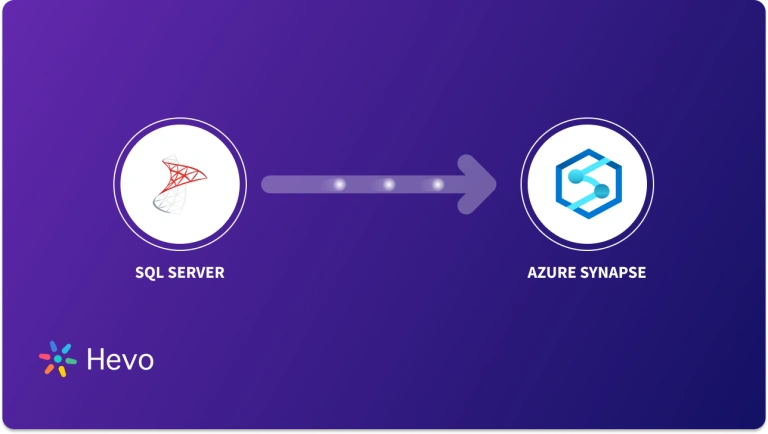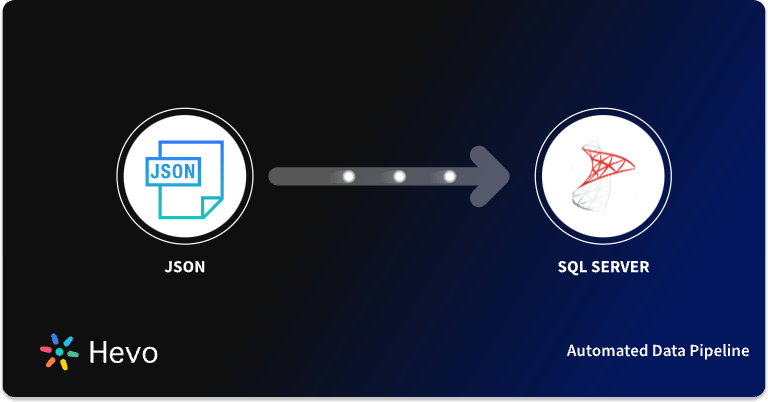If you’re managing a SQL Server database and need to keep track of changes without the complexity of a full audit trail, SQL Server Change Tracking is a lightweight and efficient solution. It allows you to monitor inserts, updates, and deletes on tables while keeping overhead minimal.
In this blog, we’ll explore MSSQL Change Tracking, its benefits, and the key steps to implement it in your SQL Server environment to track data changes efficiently. Whether you’re syncing data across systems or simply keeping tabs on modifications, this feature can save you time and effort. Let’s dive into how you can set it up.
Table of Contents
What is SQL Server?
Microsoft SQL Server provides robust facilities for data storage and retrieval in the form of a Relational Database Management System (RDBMS). This tool facilitates a rich collection of functionalities among which Transactional Processing, Data Auditing and Data Analytics are used widely by businesses today. Moreover, Microsoft SQL Server holds its position as one of the top 3 most popular database management platforms along with Oracle and IBM products.
Key Features of Microsoft SQL Server
The popular features of Microsoft SQL Server are as follows:
- Accelerated Data Recovery: Microsoft SQL Server contains a powerful recovery and rollback setup that activates automatically during server crashes. This recovery mechanism relies on Transaction Logs to perform full or partial rollbacks with minimum delay time.
- Advanced Encryption: Data security and privacy are the 2 most basic necessities of any DBMS. Microsoft, in 2016, installed AlwaysEncrypted software on its SQL Server to provide you with transparent encryption of column data. Furthermore, this feature performs encryption without presenting the Database Administrators with any access to the secret keys (Decryption).
- Intelligent Query Processing: Microsoft SQL Server offers great performance results using Dynamic Memory Grants, Table Variable Compilation, etc. This comes as a result of an in-built Query Optimizer that manages the execution plan.
- Advanced Analytics: You can access the Microsoft SQL Server data seamlessly and perform a detailed analysis to seek valuable insights. Furthermore, you can work with the Server Analysis Service (SSAS) of Microsoft which performs Data Mining tasks efficiently.
To learn more about Microsoft SQL Server, visit SQL Server’s official site.
Tired of writing long lines of code for enabling MSSQL change tracking? Unlock the power of your data by effortlessly replicating it using Hevo’s no-code platform. Use Hevo for:
- Simple two-step method for enabling SQL server change tracking.
- Performing pre/post load transformations using drag-and-drop features.
- Real-time data sync to get analysis-ready data.
You can see it for yourselves by looking at our 2000+ happy customers, such as Airmeet, Cure.Fit, and Pelago.
Get Started with Hevo for FreeWhy do We Need SQL Server Change Tracking?
We require SQL Server Change Tracking because it provides a simple, efficient way of tracking changes, such as inserts, updates, and deletes, to tables without the overhead of more complex solutions, like CDC, or triggers, but here are the main reasons why Change Tracking is useful:
- Data Synchronization: To be sure, if one is synchronizing data amongst systems, like from a source database to a reporting system, Change Tracking lets you capture only what has changed in your data while reducing the amount of data processed to become much more efficient.
- Minimal Overhead: It does not affect your database’s performance like full audit systems, since it tracks only the need-to-know changes without logging details of each modification, thus suitable for high-performance-sensitive applications.
- Reduced Complexity: Applications may have a simple requirement to identify the modified rows (need not read the change history) change tracking allows for an order of magnitude simpler solution, easier compared with other more complex solutions, such as triggers or CDC.
Types of SQL Server Change Audits
Microsoft SQL Server Change Tracking mechanism provides your applications with various techniques to audit the changes made to the Microsoft SQL database. Some of the most popular auditing techniques are:
- Manual Auditing: This mechanism involves a set of queries and reports that allow you to track activities for each table, transaction, recent changes etc, manually. This method provides you with total control, however, it is time-consuming and you can not scale it to include all auditing events.
- SQL Server Triggers: SQL Server provides triggers as a basic functionality which has its own importance for users. These triggers are easy to set up and track database information. You can customize them according to your requirements and build your auditing information repositories. However, since triggers often throw errors to the client applications, you should not rely on them for SQL Server Data tracking in case of high throughput or bulk operations.
- SQL Server Extended Events: This SQL facility offers better performance than SQL Triggers and also provides you with built-in GUI tools. However, the Extended Events functionality can not help you with information regarding what data was inserted or deleted. Furthermore, it has no provision to compare the results of 2 auditings and get changes or updates.
- SQL Server Audit: This is an old SQL Server feature that provides you with a basic data aggregation facility while auditing. However, its usefulness in the modern data world is limited.
- Change Tracking: This is an advanced feature of SQL Server and you will require training & experience to implement it. Moreover, it records only those changes that are connected with the primary key of a table.
- Change Data Capture (CDC): This is a relatively new feature in SQL Server and is much more useful than change tracking. Performing CDC will provide you with much better auditing capabilities as it tracks a variety of information regarding your data tables. However, CDC lacks a proper user interface and you need to rely on queries to use this comprehensive feature.
Steps to Set Up SQL Server Change Tracking as Audits
You can set up your SQL Server Change Tracking mechanism using the following 3 steps:
- Step 1: Enable SQL Server Change Tracking for your Database
- Step 2: Enable SQL Server Change Tracking for Every Table
- Step 3: Disabling SQL Change Tracking
Step 1: Enable SQL Server Change Tracking for your Database
You can enable SQL Server Change Tracking on your database table for auditing via ALTER DATABASE T-SQL statement, as shown below:
USE master
GO
ALTER DATABASE [CTAudit]
SET CHANGE_TRACKING = ON
(CHANGE_RETENTION = 2 DAYS, AUTO_CLEANUP = ON)Write the above code in the Tracking tab (Database Properties) SQL Server Management Studio tool. The below image shows on-disk tables and the auto-clean process:

Step 2: Enable SQL Server Change Tracking for Every Table
Once you enable the SQL Server Tracking on a database, the next step is to do the same for each table so that you can track the DML changes. You can achieve this by using The Alter Table T-SQL statement as shown below:
USE CTAudit
GO
ALTER TABLE Employee_Main
ENABLE CHANGE_TRACKING
WITH (TRACK_COLUMNS_UPDATED = ON)
Keep in mind that the above code will not work on a database table if there is no Primary Key defined as shown below.

Once SQL Server Change Tracking is in place, your SQL Server Engine will generate an internal table, with the default name Change_Tracking_<Object_ID>. This will track the user table for changes due to the INSERT, UPDATE and DELETE statements.
Step 3: Disabling SQL Change Tracking
Enabling SQL Server Change Tracking on a database table will not prevent you from performing DDL changes at that table, except for the changes on the Primary Key that will fail unless the CT is disabled on that table.
Change Tracking can be disabled at the table level using the ALTER TABLE T-SQL statement below:
USE CTAudit
GO
ALTER TABLE Employee_Main
DISABLE CHANGE_TRACKING
GOAfter disabling it at the table level, Change Tracking can be easily disabled at the database level, using the ALTER DATABASE T-SQL statement below:
USE master
go
ALTER DATABASE CTAudit
SET CHANGE_TRACKING = OFF
GOLimitations of SQL Server Change Tracking
Microsoft SQL Server Change Tracking comes with its own share of limitations, some of which are as follows;
- The SQL Server Change Tracking features allow you to capture changes, however, a significant amount of coding is still required to capture the relevant changes.
- Enterprises seeking reliability and robustness for Change Tracking must also learn to manage the maintenance and data issues that come along with SQL Server Change Tracking features. Managing various new tables and different data types are some of the major concerns for enterprise developers.
- Every table needs to have a primary key if you wish to deploy SQL Server Change Tracking. This limits the usage of this feature and adds an extra constraint.
How Hevo Supports SQL Server Change Tracking?
Hevo uses Change Tracking (CT) instead of Change Data Capture (CDC) for some Sources as CT requires lesser data to be managed and stored at the Source. Change Tracking replicates the historical data changes and Hevo pushes these changes to the Destination in near real-time, compared to CDC which maintains all the historical changes to the data at the Source.
To Enable change tracking for your SQL Server:
- Step 1: Configure SQL Server as your source
- Step 2: Enable Change Tracking
- Step 3: Configure your destination
Conclusion
The article introduced you to SQL Server and explained its key features. It also explained the importance of SQL Server Change Tracking and discussed the types of techniques available for this purpose. Moreover, the article provided 3 easy steps to set up the required SQL Server mechanism for auditing and tracking data. It also listed the limitations associated what this mechanism.
Now, to run SQL queries or perform Data Analytics on your SQL Server data, you first need to export this data to a Data Warehouse. This will require you to custom code complex scripts to develop the ETL processes. Hevo Data can automate your data transfer process, hence allowing you to focus on other aspects of your business like Analytics, Customer Management, etc. This platform allows you to transfer data from 150+ multiple sources like SQL Server to Cloud-based Data Warehouses like Amazon Redshift, Snowflake, Google BigQuery, etc. It will provide you with a hassle-free experience and make your work life much easier.
Sign up for a 14-day free trial and experience the feature-rich Hevo suite first hand.
Frequently Asked Questions
1. What is change tracking in SQL Server?
Change tracking in SQL Server captures changes (inserts, updates, deletes) in a table without storing historical data, enabling efficient synchronization between databases or systems.
2. How to track object changes in SQL Server?
You can track object changes (like table or view modifications) using SQL Server Auditing, DDL Triggers, or tools like SQL Server Management Studio‘s built-in features for schema changes.
3. How to track permission changes in SQL Server?
Use SQL Server Auditing to log permission changes or set up DDL Triggers to monitor changes in user roles, privileges, and permissions at the server or database level.











